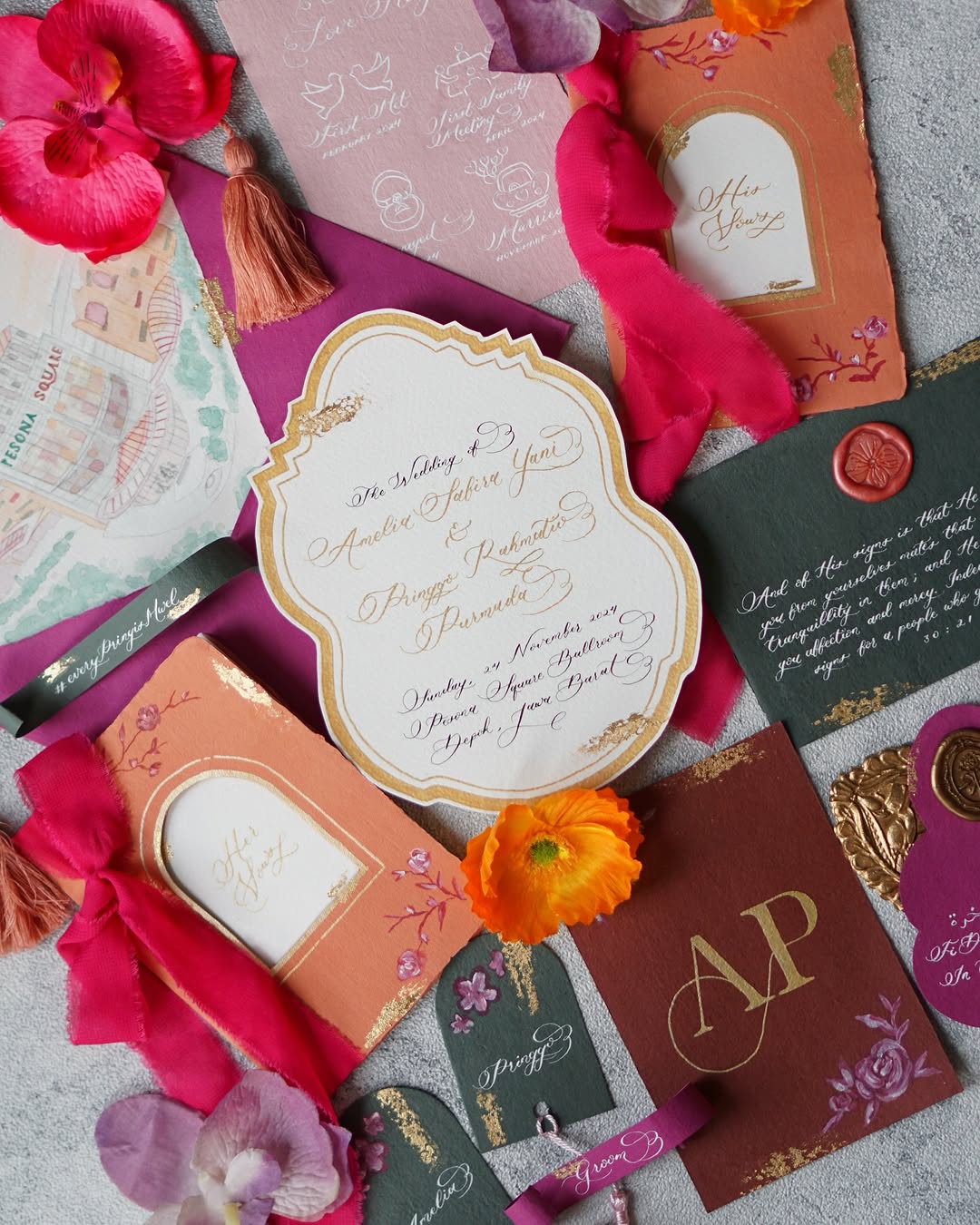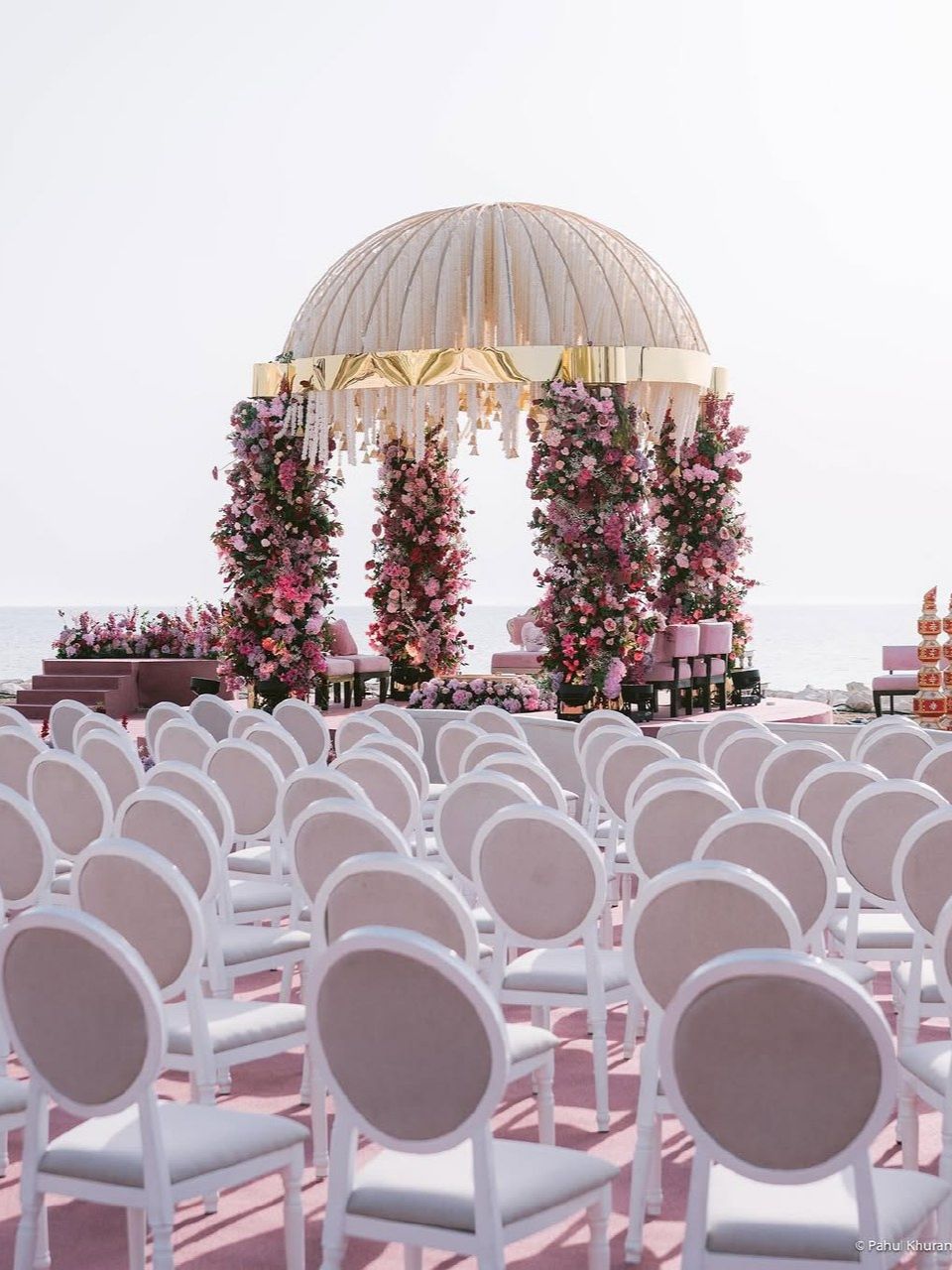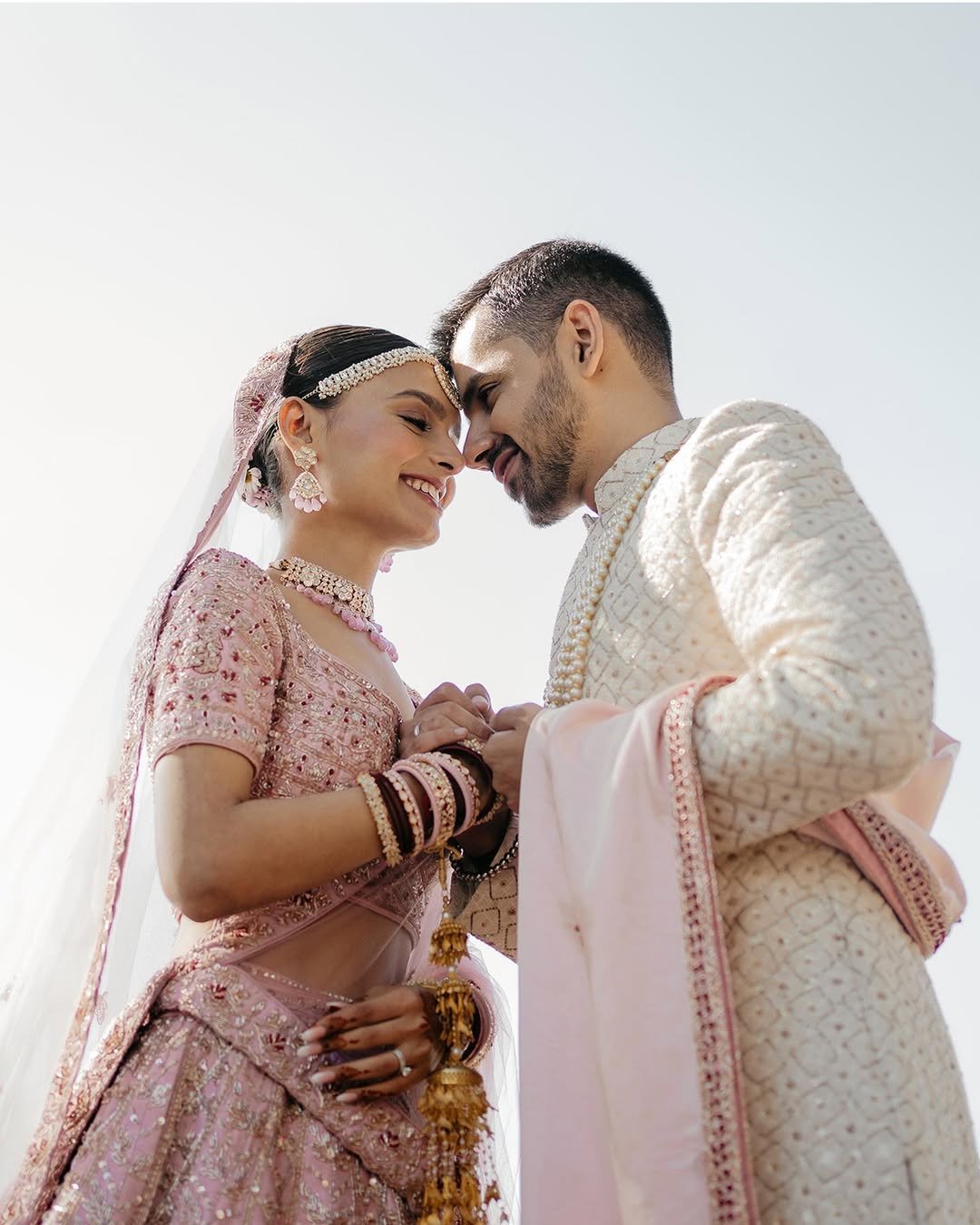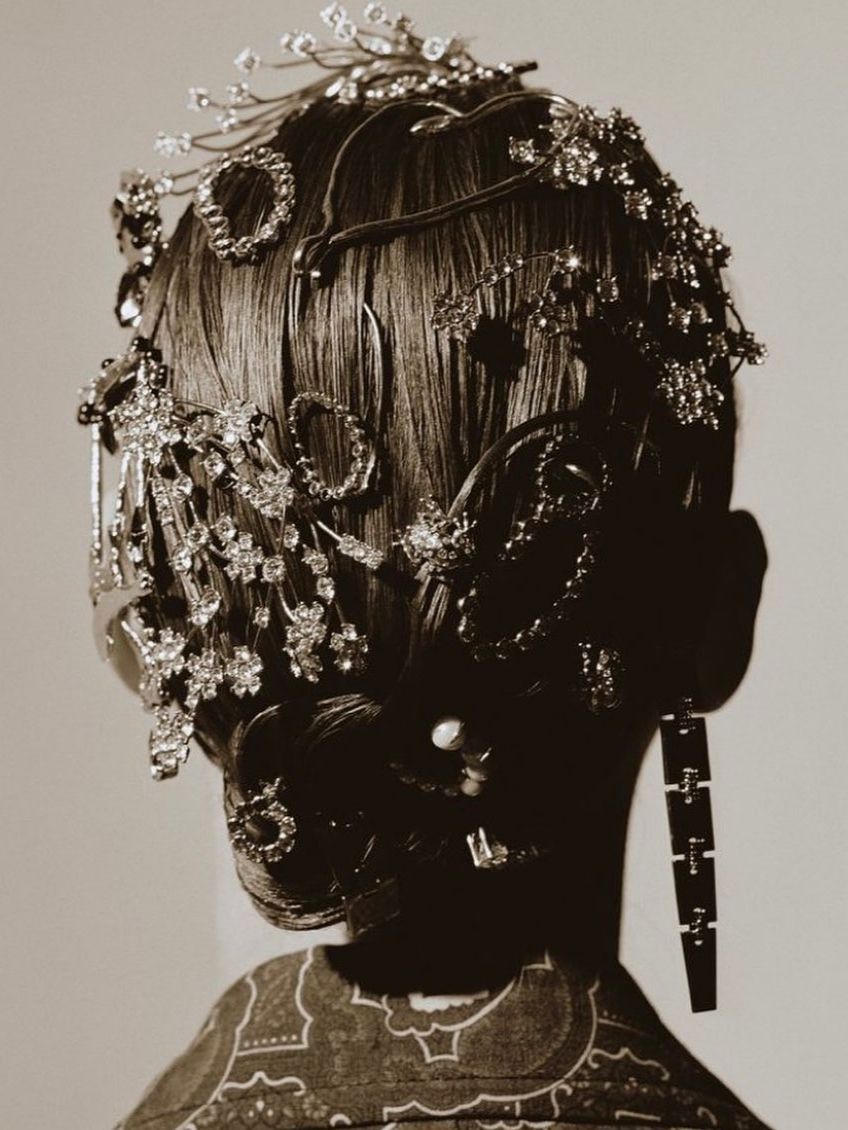The Ultimate Guide to Hindu Wedding Photos
- Author: Natali Grace Levine
- Reading time: 9 min 48 sec
- Publication date: 02/18/2025
- Updated: 02/20/2025
Few celebrations match the grandeur of a Hindu wedding. Over several days of ceremonies, families and friends gather to revel in a beautiful blend of tradition, color, and joyous festivities. From the bride’s intricate mehndi to the thrilling beats of the Sangeet, each moment is a feast for the eyes—and the camera. This guide will help you navigate everything from choosing the perfect photographer to understanding the costs involved, ensuring that every precious ritual and heartfelt smile is captured just the way you’ve always imagined.

Key Events in a Hindu Wedding
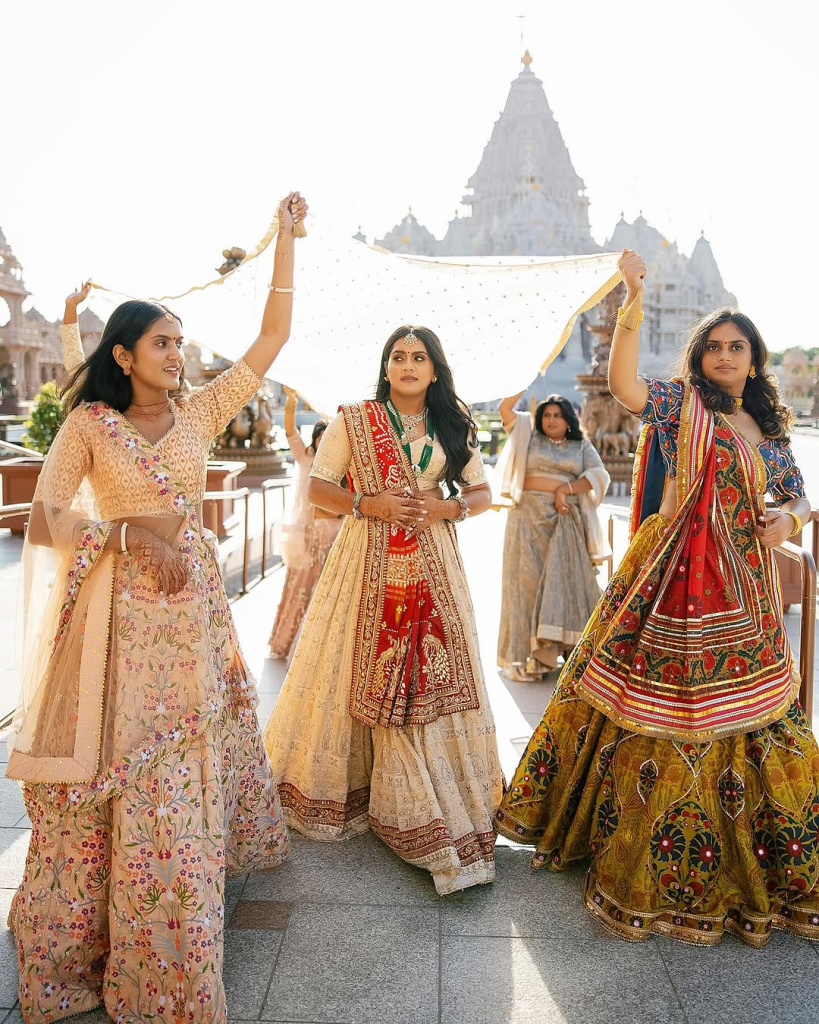
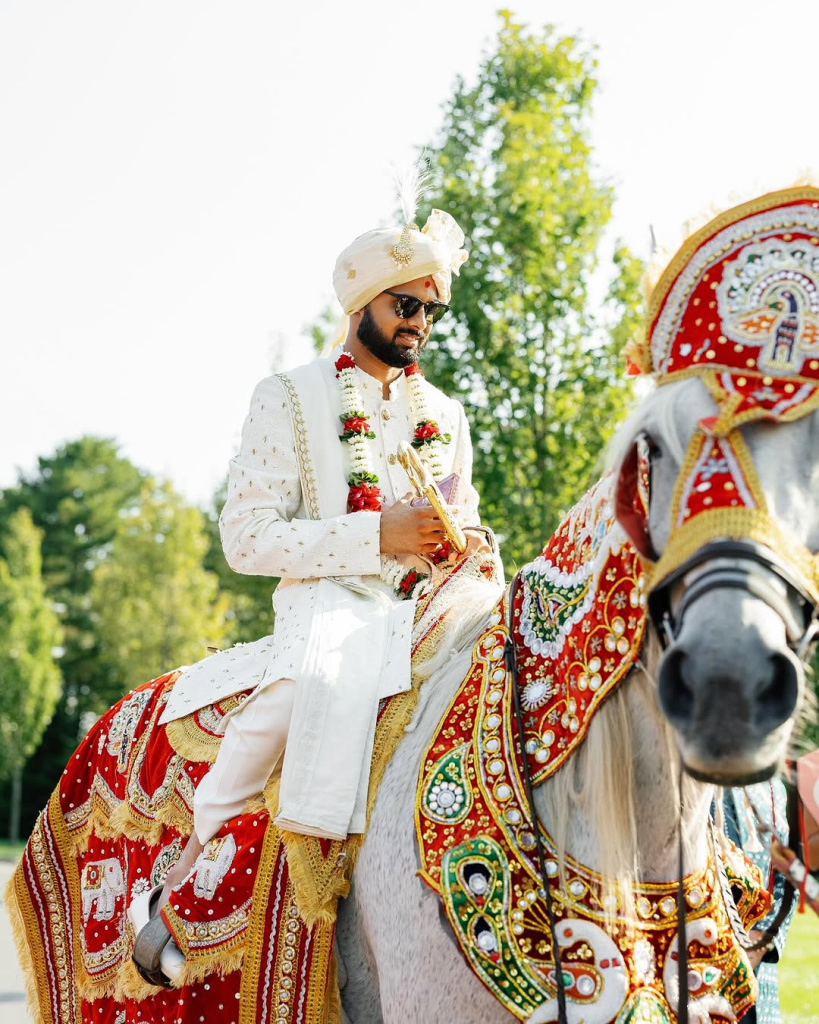
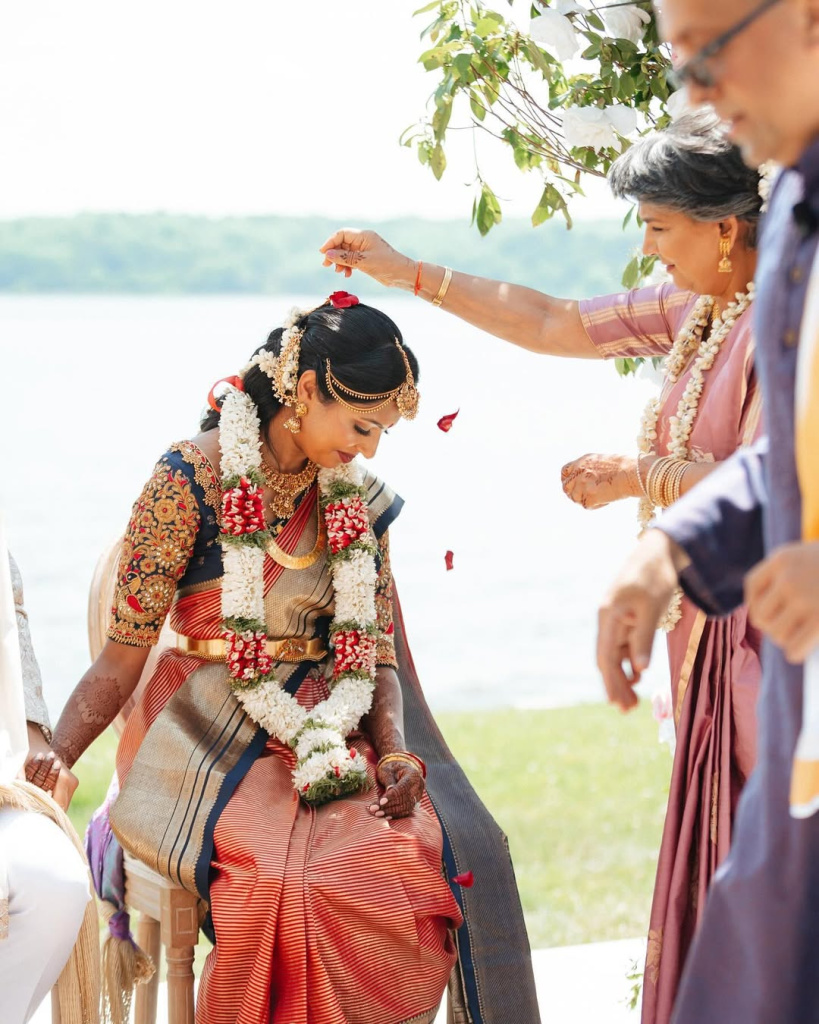
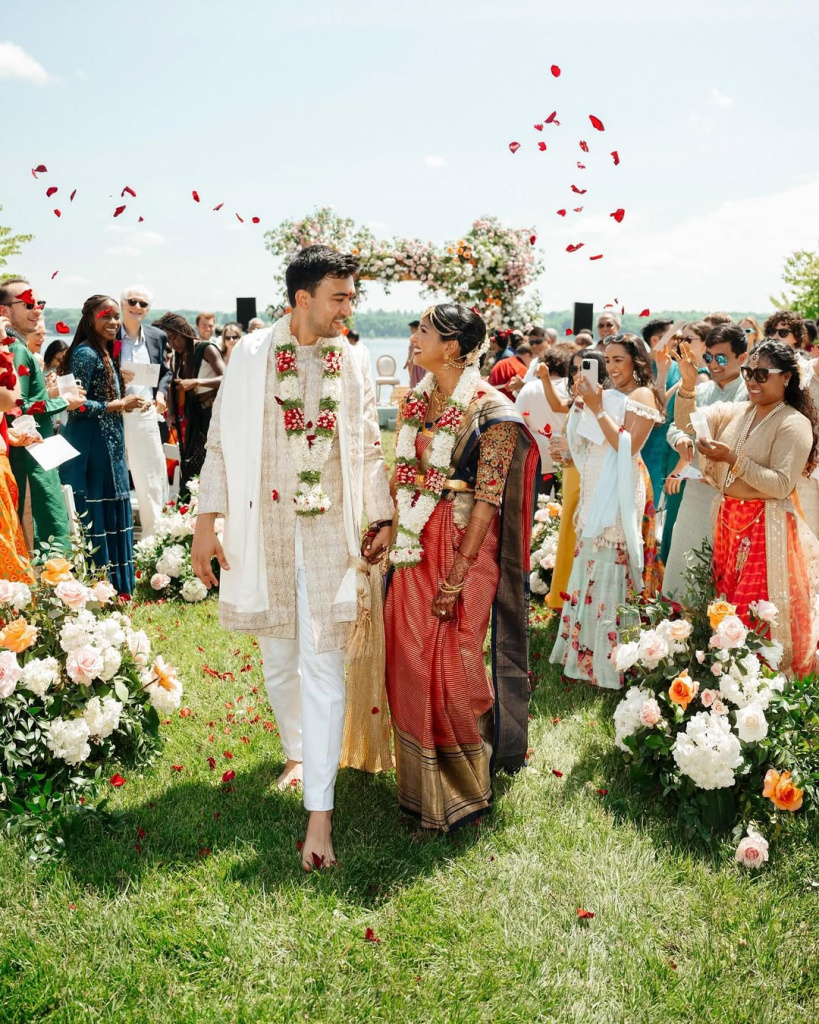
By understanding these ceremonies and planning the photography coverage accordingly, you’ll ensure that each ritual is preserved in its authentic, colorful glory.
Mehndi (Henna) Ceremony
Celebrated a day or two before the wedding, the bride’s hands and feet are adorned with intricate henna designs. It’s a fun, relaxed evening featuring family banter, traditional songs, and possibly light snacks. Candid shots here capture laughter, camaraderie, and of course, those gorgeous henna details.
Haldi Ceremony
Usually held the morning of or a day before the wedding, this ritual involves applying a turmeric-based paste to both the bride and groom. It’s meant to bless the couple with prosperity and radiant skin. Photographers often capture playful splashes of turmeric and the bright yellow palette that defines this joyous gathering.
Sangeet
As the name suggests, the night comes alive with music and dance. Families often plan choreographed performances, surprise dance-offs, or fun skits. Photographers have a field day snapping the energetic moves and the wide smiles that inevitably follow each performance.
Wedding Day Ceremonies
- Baraat: The groom’s grand entrance, complete with drums, dancing, and sometimes a decked-out horse or exotic car.
- Mandap Rituals: Under a decorated canopy, the bride and groom exchange vows, circle the sacred fire, and perform rituals that unite them for life.
- Vidaai: An emotional send-off for the bride as she officially joins her husband’s family, often one of the most tearful and poignant moments to document.
Reception
This post-wedding celebration is a fusion of tradition and modern style. Expect glamorous outfits, live entertainment, and heartfelt speeches. Photographers typically capture formal portraits, group shots, and candid moments as families come together to toast the newlyweds.
Choosing Your Hindu Wedding Photography Style
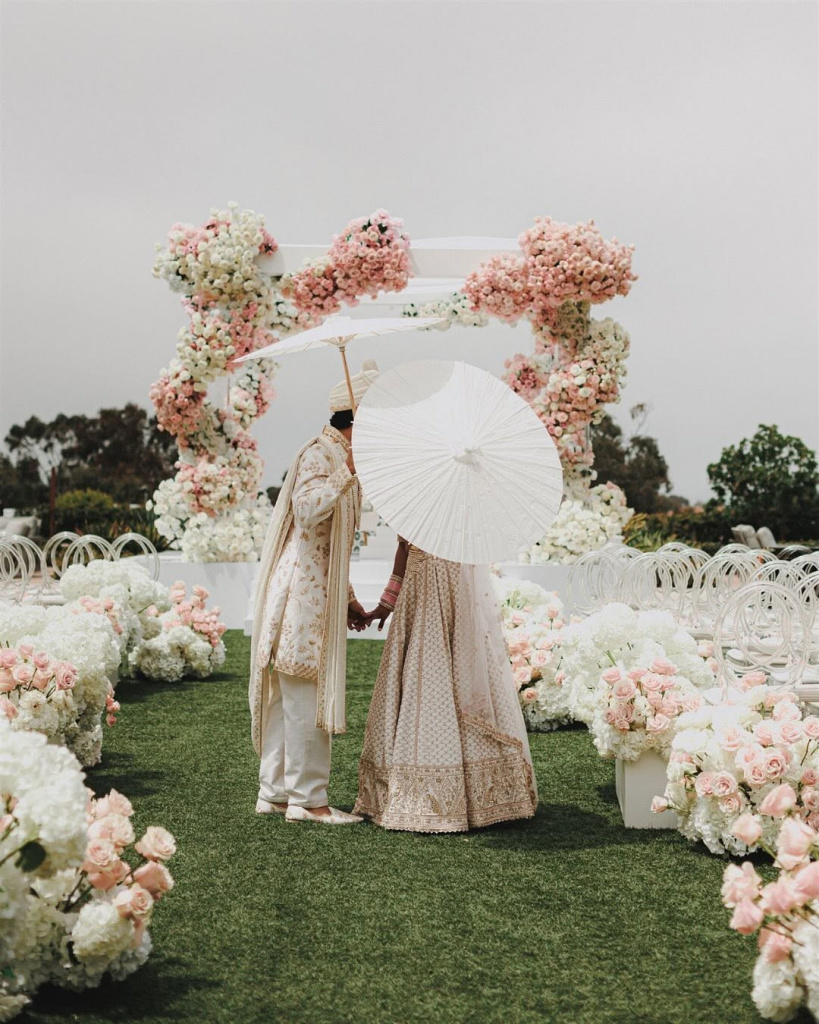
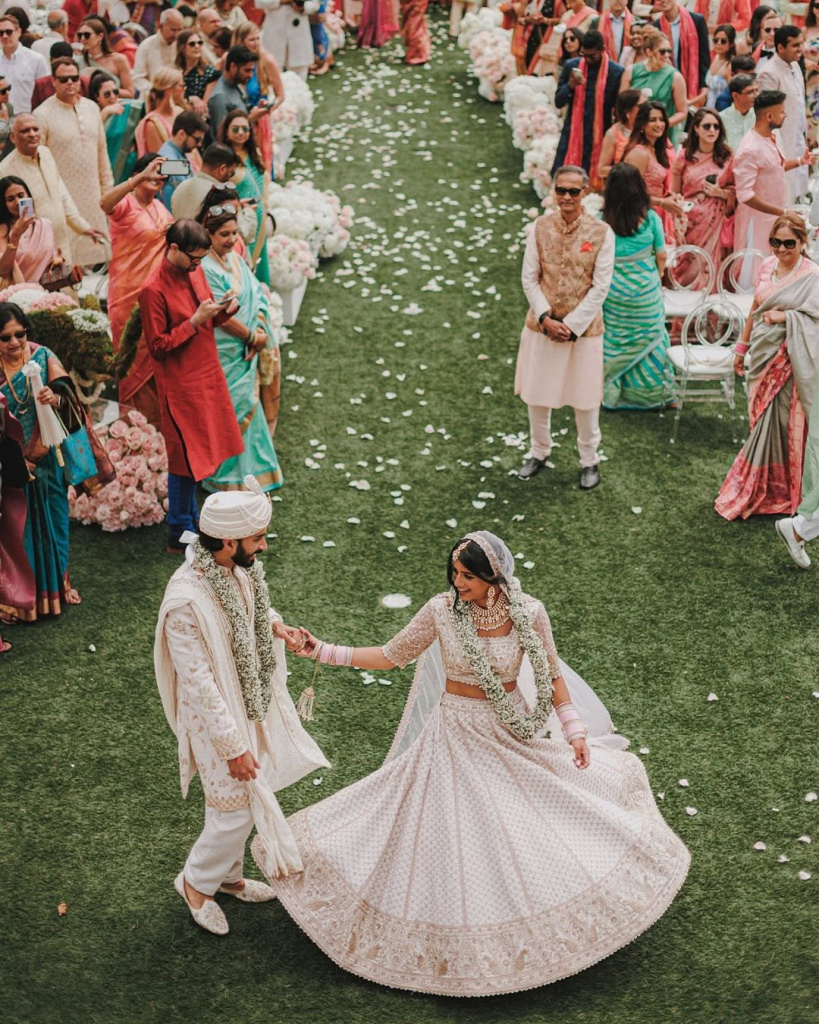
When it comes to documenting a Hindu wedding, there’s no one-size-fits-all approach. Each couple has a unique story, and the right photography style can bring out the essence of their celebration. From timeless traditional portraits to modern, documentary-style candids, here are some popular approaches to consider.
Traditional Photography
Classic poses, family portraits, and detailed coverage of each ritual. Ideal for those who want a comprehensive visual record, ensuring every moment—from the Haldi to the Vidaai—is meticulously captured.
Best For: Couples who appreciate the beauty of posed shots and want to make sure no family member is missed.
Candid Photography
An unobtrusive style focused on capturing genuine emotions and spontaneous moments—think laughter, happy tears, and the fleeting expressions between vows. It produces images that feel real and alive, reflecting the authentic energy of your wedding festivities.
Best For: Couples who prefer an organic storytelling approach and love the idea of flipping through an album filled with unposed, heartfelt memories.
Drone & Aerial Shots
High-angle or overhead views of the venue, baraat processions, and outdoor rituals captured by a drone camera. Aerial footage adds dimension and scale, highlighting the grandeur of large outdoor venues or the lively dancing processions.
Best For: Couples with spacious or scenic venues who want a wow factor in their wedding album and videos.
Photojournalistic/Documentary Style
An editorial approach focused on telling a visual story of the wedding day as it naturally unfolds. Photographers capture intricate details, key rituals, and raw emotions without orchestrating much. Produces images that feel intimate and honest—ideal for couples who love minimal staging and want their album to reflect the genuine hustle and bustle of a Hindu wedding.
Best For: Those who appreciate a “fly on the wall” approach, capturing the atmosphere, décor details, and behind-the-scenes interactions.
Concept or Fine Art Photography
A highly creative form of photography that may involve styled pre-wedding shoots, unusual angles, dramatic lighting, or thematic elements reflecting the couple’s interests (e.g., Bollywood-themed, travel-inspired, boho-chic). It merges artistic flair with personal storytelling, giving you images that look straight out of a magazine editorial.
Best For: Couples who love experimenting with ideas and don’t mind a bit of posing or direction for that extra wow factor.
Finding Your Style
- Communicate: Share references or sample images you like with your photographer. This helps them tailor their approach to your tastes.
- Know the Venue: Outdoor weddings are perfect for aerial or cinematic shots, while indoor ceremonies might call for creative lighting setups or closer, more intimate photography styles.
- Mix & Match: Don’t be afraid to blend styles. You might love the look of formal portraits but also want candid moments from your Haldi or Sangeet.
- Comfort is Key: Choose a style that resonates with your personalities. Photographs turn out better when you’re relaxed and having fun.
Ultimately, the best style is the one that tells your love story in the most authentic way. Whether you lean towards classic poses, documentary candids, or a grand cinematic film, your wedding album should reflect the vibrant energy and deep-rooted traditions of a Hindu celebration—and, most importantly, who you are as a couple.
Hindu Wedding Photographers: Budgeting & Cost Breakdown
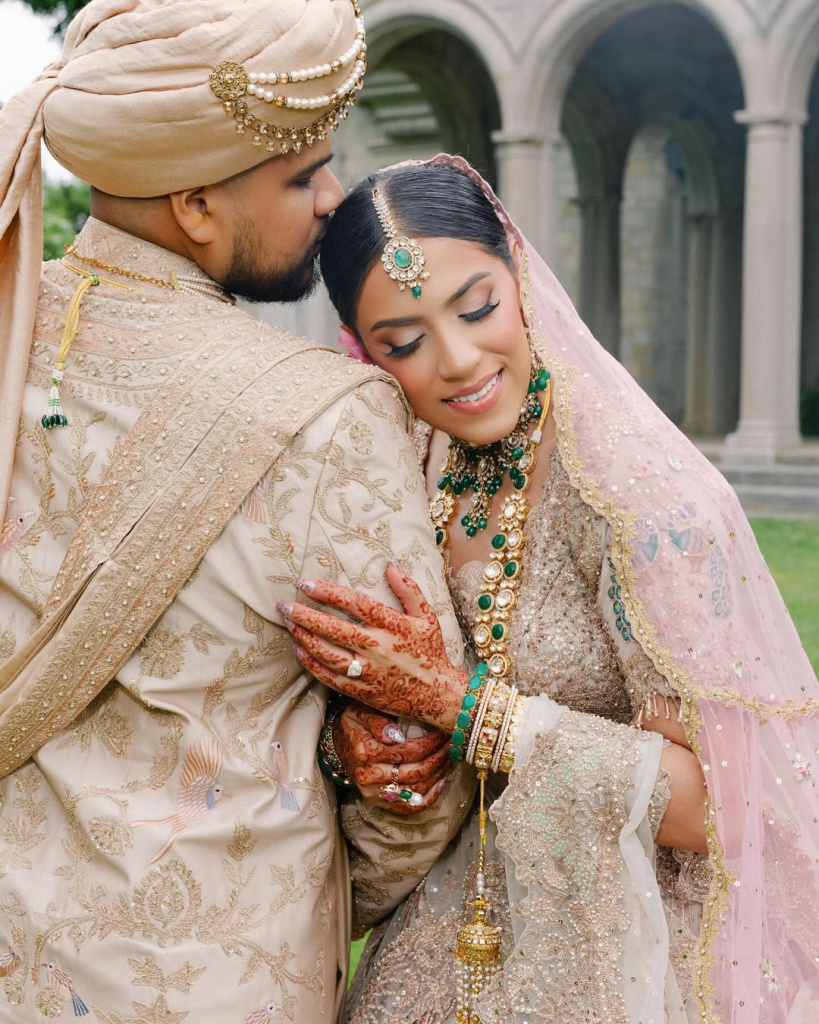
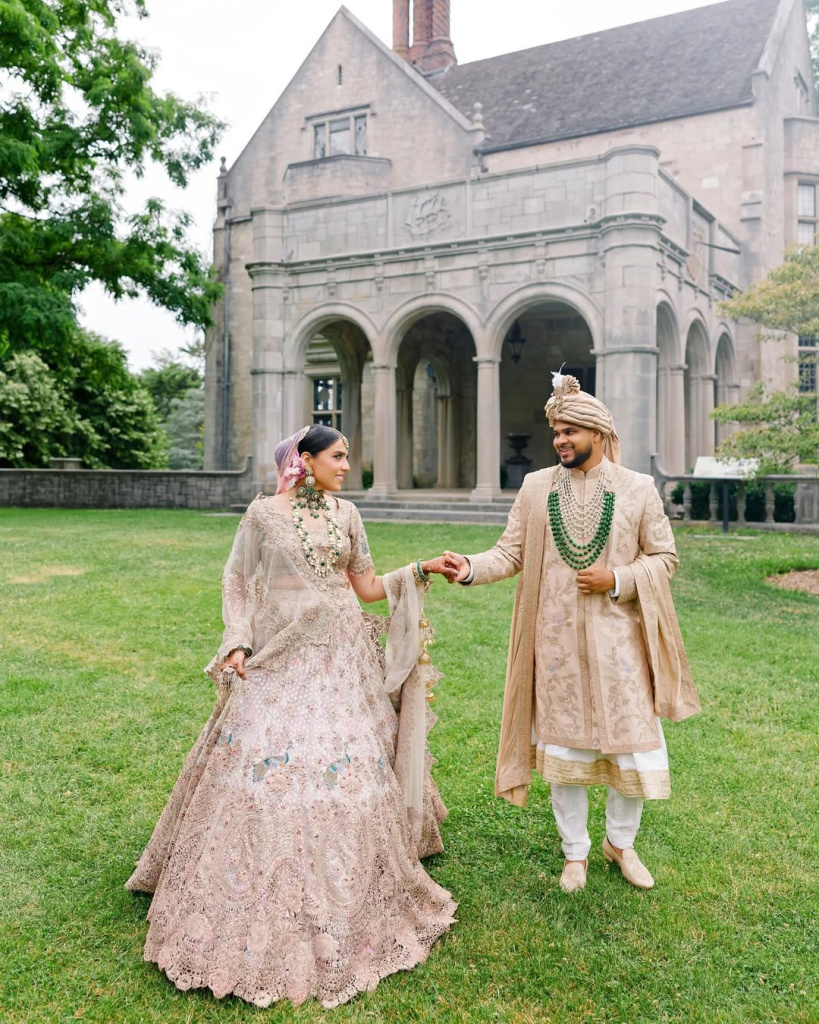
Costs for Hindu wedding photography can fluctuate based on everything from the number of events you plan to the photographer’s experience and style. You might pay as little as $1,000 for a simple, no-frills shoot—or invest up to $20,000 (and sometimes more) for an extensive, multi-day celebration.
Factors that affect the price:
- Number of Events: A multi-day affair, complete with Mehndi, Haldi, Sangeet, and Reception, naturally requires more coverage (and a bigger budget) than a single-day ceremony.
- Guest Count & Venue Size: A larger wedding venue or guest list often means more photographers (and gear) to ensure no moment goes uncaptured.
- Travel & Logistics: If your wedding takes place in a destination that requires flights or long-distance travel, factor in additional costs for transportation and accommodation for the crew.
- Photography Team & Equipment: A solo photographer may charge less, while a team offering multiple camera angles, drone footage, and cinematic equipment could push costs higher.
- Post-Production & Deliverables: Editing styles vary—some couples prefer a simple, natural look, while others want magazine-style retouching, ornate albums, or customized films. Each option affects your total investment.
By keeping these considerations in mind and communicating openly with prospective photographers, you can find an arrangement that matches both your vision and your budget—ensuring you get the most value for every treasured moment captured.
Selecting the Perfect Hindu Wedding Photographer
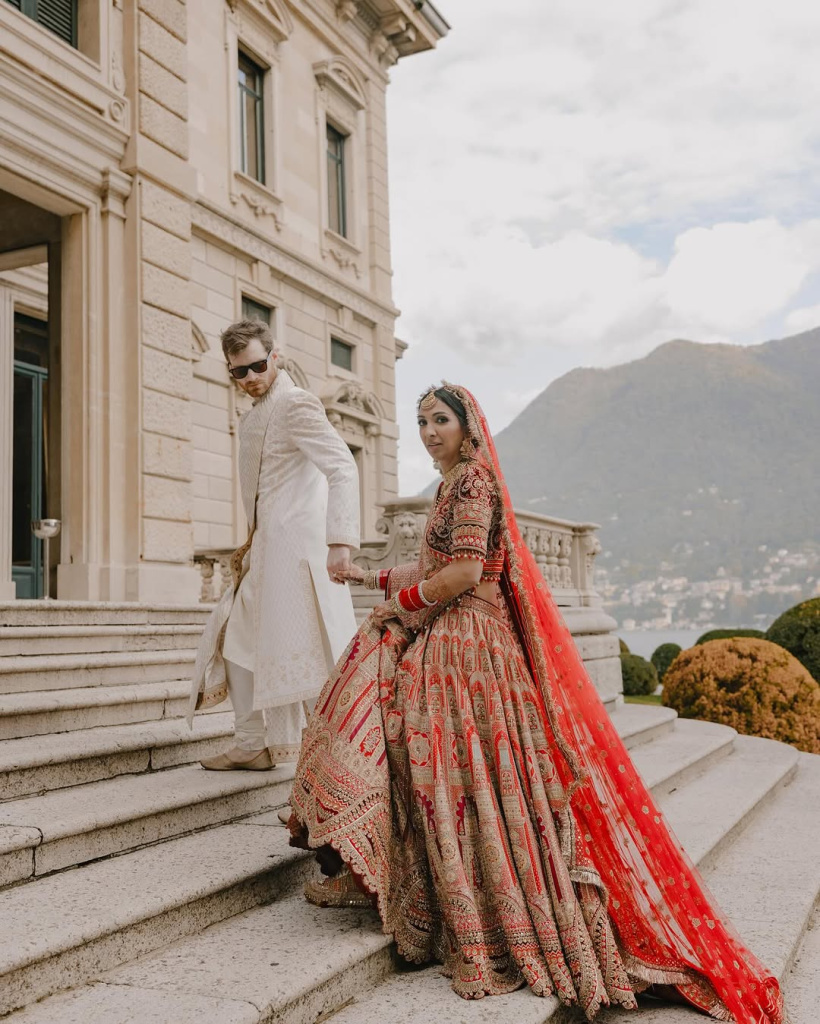
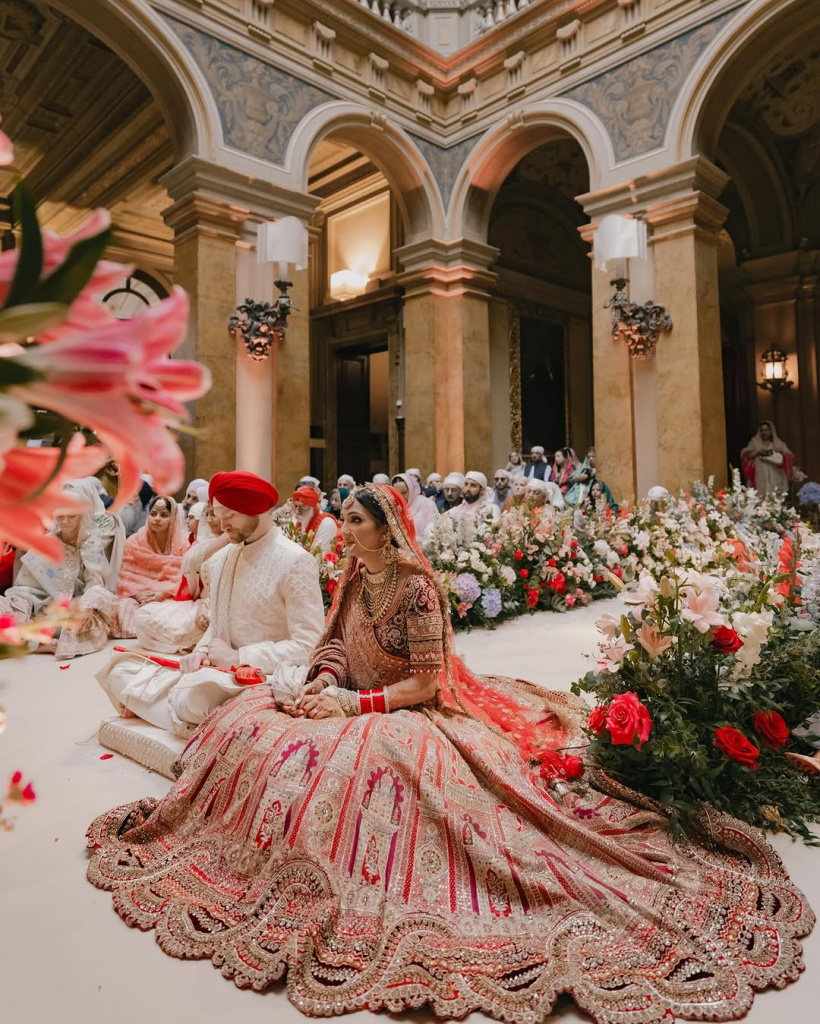
Choosing the right photographer for a Hindu wedding involves more than just liking a few pretty pictures. It’s about finding someone who understands the cultural nuances, knows the flow of events, and can capture the raw emotion underlying each ritual.
Explore Culturally Focused Portfolios
Photographers who have covered Hindu weddings extensively will have galleries showcasing the Haldi, Mehndi, and Mandap rituals, along with traditional customs like tying the Mangalsutra or taking the seven vows.
What to Look For: Consistent quality across different lighting situations (indoor mandap vs. outdoor Baraat) and an evident storytelling flow from one ritual to the next.
Ask About Ritual Familiarity
In a Hindu wedding, timing is everything. Missing the key moment when the groom ties the Mangalsutra or applies sindoor can be heartbreaking for a couple.
What to Ask: Whether they know which ceremonies require the most focus, and if they’ve covered weddings from various regions (North Indian, South Indian, Gujarati, etc.), as customs can differ subtly.
Check for Cultural Sensitivity
Photographers who respect the sanctity of religious rituals will be more mindful of where to stand or how to use flash, especially during sacred ceremonies.
What to Notice: Their approach to the priest’s instructions or any temple regulations, and their ability to remain unobtrusive during solemn moments.
Review Client Testimonials & Referrals
Feedback from couples who have already walked down the same aisle can give you real insight into a photographer’s professionalism, punctuality, and adaptability.
What to Seek: Specific praise about how well they adapted to last-minute changes or how they handled a fast-paced Baraat or Sangeet performance.
Discuss Style & Vision
Some photographers excel at candid shots, others at artistic portraiture. Confirm that their shooting style aligns with your dream wedding album—be it cinematic flair, documentary honesty, or a bit of both.
What to Clarify: Whether you want them to direct a few posed family shots or maintain a behind-the-scenes approach.
Assess Communication & Personality
You’ll be spending significant time with your photographer, from pre-wedding events to the final farewell. A friendly, professional rapport encourages natural expressions and stress-free interactions.
What to Gauge: Their eagerness to learn about your preferences, responsiveness to messages, and readiness to adapt to cultural or familial nuances.
Know Their Team Setup
Larger weddings might need multiple photographers to cover parallel ceremonies or large guest counts. If drone footage or cinematic video is high on your list, check that they have specialists for each task.
What to Confirm: The number of photographers, videographers, and any additional assistants—plus how they coordinate during the actual events.
Hindu Wedding Photography Schedule to Steal
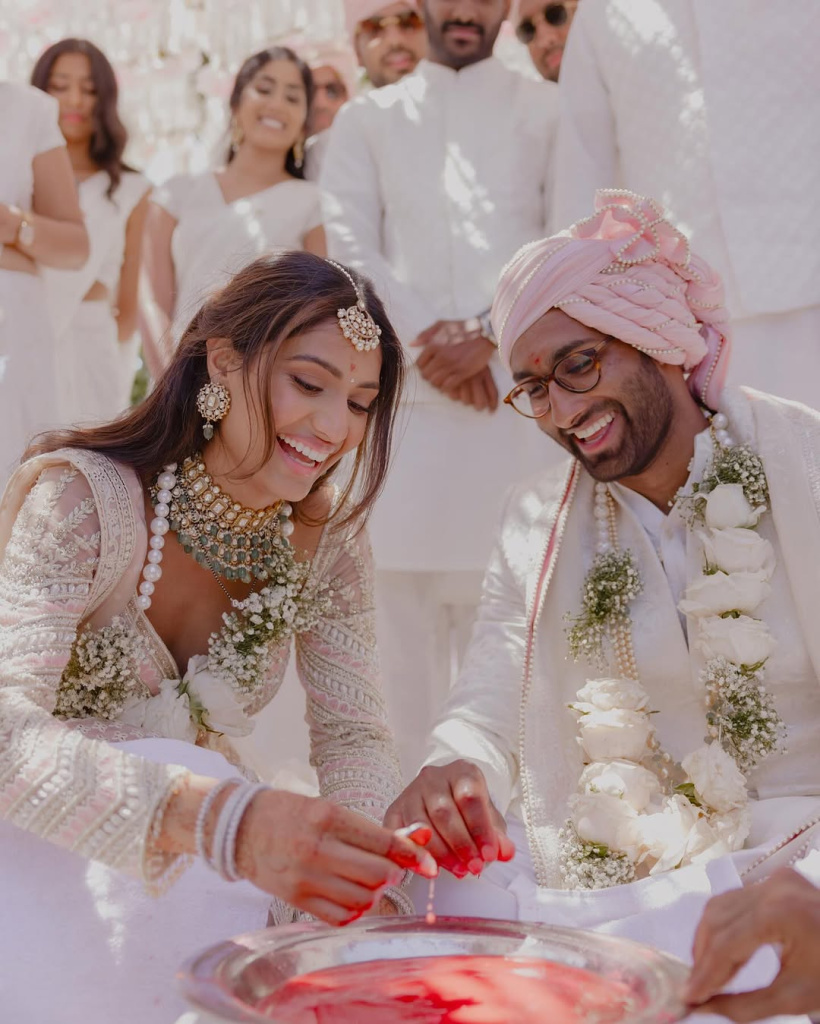
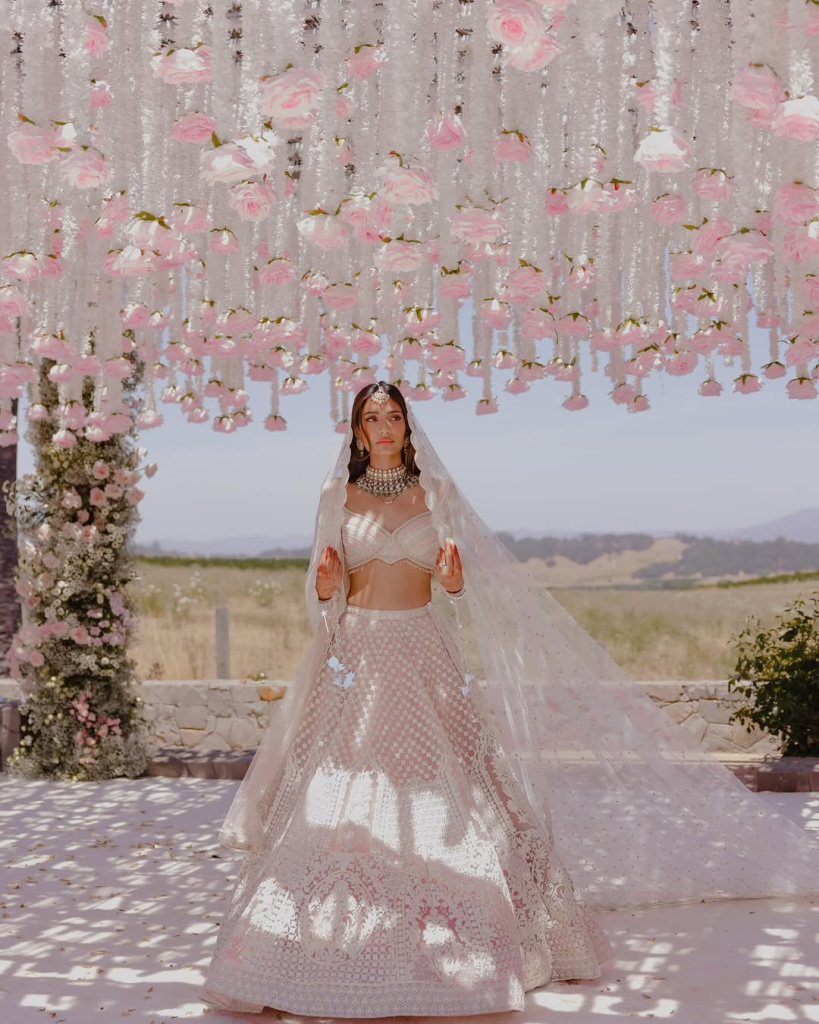
A Hindu wedding often unfolds over multiple days, each with its own customs, ceremonies, and lively get-togethers. Coordinating a timeline that covers every event—and ensures photographers capture the most significant moments—can be a juggling act. Below is a sample multi-day schedule you can adapt to suit your own traditions and timings.
Day 1: Mehndi
Morning/Afternoon (Optional)
- Venue Prep & Setup: Florals, seating, and henna stations arranged.
- Photographer Arrival & Setup: Test lighting, scout best angles, finalize any last-minute details with organizers.
Late Afternoon/Evening
Mehndi Ceremony:
- Bride’s Mehndi: Focus on close-up shots of intricate henna designs; candid moments with friends and family.
- Guest Mehndi: Many guests participate, so let the photographer capture the fun side chats and spontaneous laughter.
- Buffer: 30 minutes to accommodate delayed starts or extended design sessions.
Day 2 (Morning): Haldi Ceremony
Early Morning Setup
- Decor Check: Ensure the Haldi area (sometimes the bride’s or groom’s home/venue) has enough light and a clean, colorful backdrop.
- Photographer Prep: Assess the space for optimal angles—natural lighting works wonders for those bright yellow splashes.
Late Morning Ceremony
- Applying Turmeric: Family members apply turmeric paste to the bride and groom in a lighthearted atmosphere.
- Group Photos: Informal shots of guests smearing each other with turmeric, capturing candid joy.
- Buffer: 15–30 minutes. Turmeric ceremonies often start late or run longer if friends and cousins get playful.
Day 2 (Evening): Sangeet
Late Afternoon
- Sound & Light Checks: A vibrant stage setup for performances. Photographers can do test shots under colorful lights or disco setups.
- Family Portraits (Optional): If desired, schedule group photos or couples’ portraits before the main event.
Evening Party
- Dance Performances: Coordinate with choreographers for best vantage points—photographers can plan angles for the highlight acts.
- Open Dance Floor: After formal performances, capture candid moments and energetic dance-offs.
- Buffer: 30–60 minutes. Sangeet can run late, especially if the crowd loves dancing!
Day 3: Wedding Day
Early Morning Prep
- Bride & Groom Getting Ready: Hair, makeup, and attire. These behind-the-scenes moments often make for intimate, storytelling shots.
- Venue Final Checks: Florals, mandap décor, seating arrangements.
Mid-Morning: Baraat
- Groom’s Procession: Drummers, dancers, possibly a horse or vintage car. Photographers should arrive early to capture the buildup.
- Buffer: 15–20 minutes for any travel delays or extended dancing in the street.
Late Morning/Afternoon: Main Ceremony
- Mandap Rituals: The bride’s entrance, exchange of garlands, tying of the Mangalsutra, and the Saptapadi (seven vows). Coordinate with the priest to catch each pivotal moment.
- Family Blessings & Rituals: Shots of parents, siblings, and relatives offering prayers and blessings.
- Buffer: 20–30 minutes. Religious ceremonies may extend, especially if multiple customs are observed.
Afternoon: Lunch Break
- Possible Portrait Sessions: If time permits, capture formal couple and family portraits.
- Photographer Rest & Gear Check: Quick recharge before the evening celebrations.
Evening: Reception
- Grand Entrance: Some couples opt for a choreographed entry or a spotlight moment.
- Speeches & Toasts: Ensure the photographer is front and center for any emotional moments.
- Cake Cutting/First Dance (If Applicable): Capture these modern additions alongside traditional elements.
- Open Dance Floor: More spontaneous, fun shots of guests enjoying themselves.
- Buffer: 30–60 minutes. Receptions can run late due to speeches, dances, or simply everyone having a great time.
Late Night: Vidaai (If Held the Same Day)
- Emotional Send-Off: The bride’s farewell from her family. Photographers should position themselves to capture tearful goodbyes and well-wishes.
- Buffer: 15–30 minutes. This moment can be unpredictable and heartfelt, so give it room to unfold.

Tips & Tricks for Picture-Perfect Moments
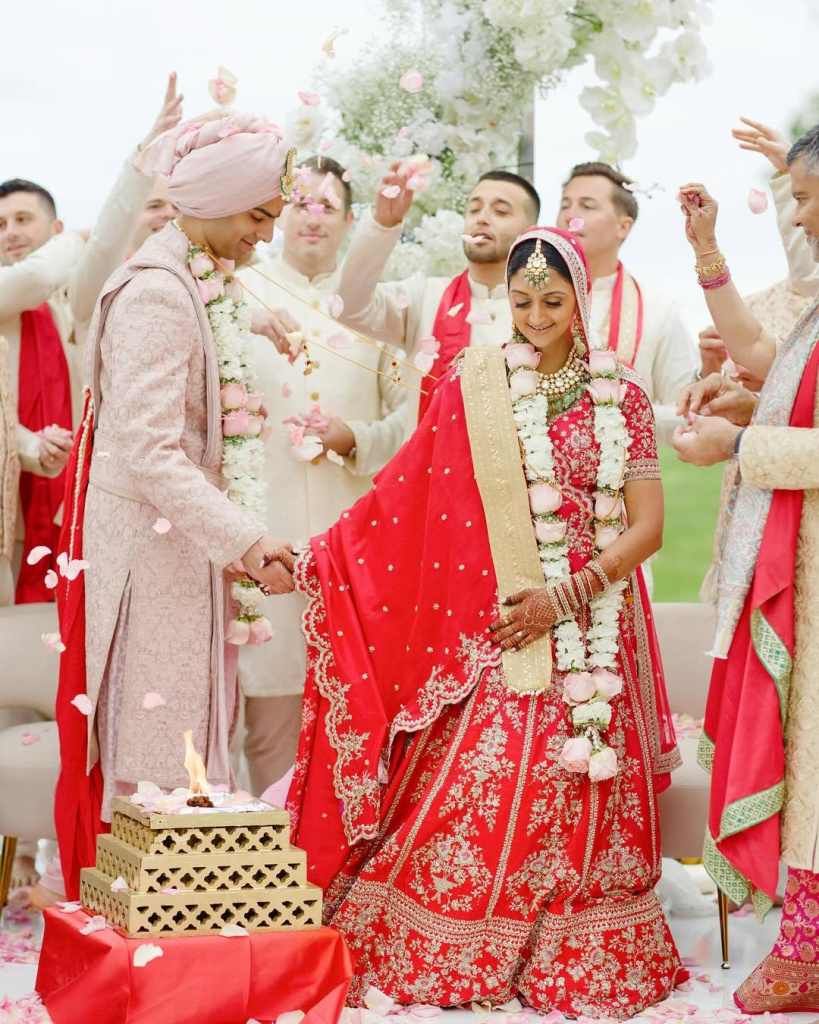
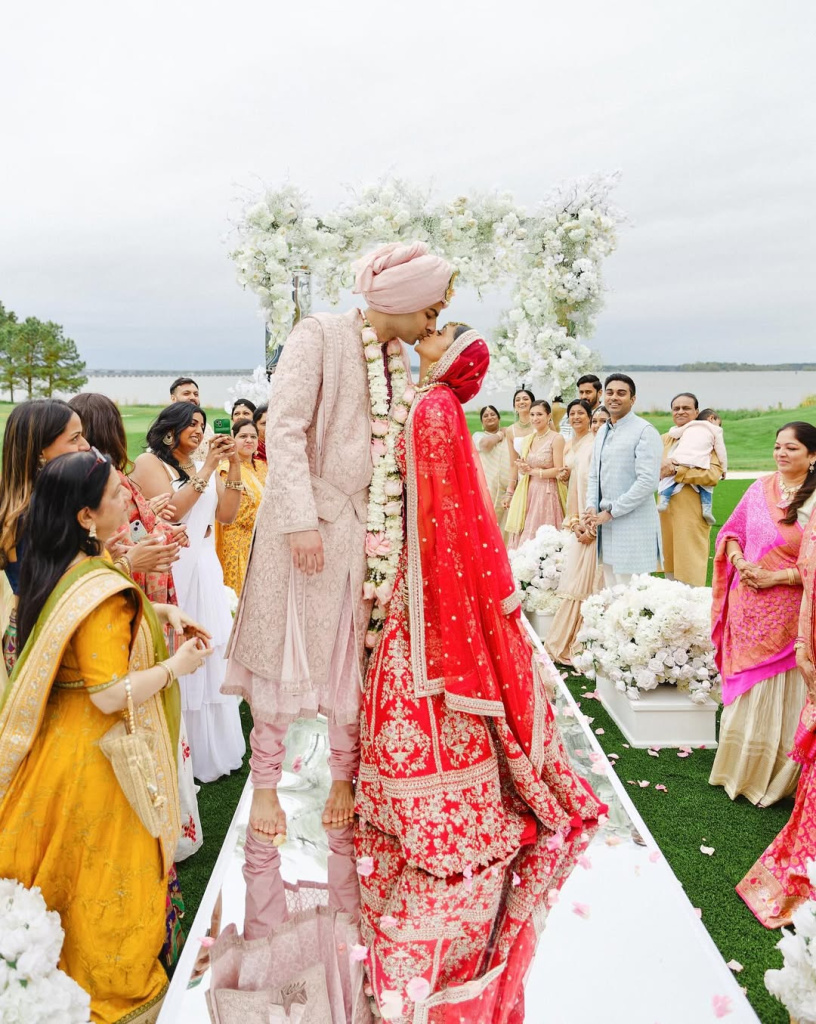
Amid the whirl of dancing, rituals, and family banter, it’s easy to forget the small details that make photos come alive. Below, you’ll find helpful pointers to ensure your wedding album sparkles with memories you’ll cherish for years.
- Coordinate Your Outfits: Pick a central color theme (like a soft pastel or a bold red-and-gold combination) and weave it into everyone’s attire in subtle ways—ties, scarves, or statement accessories.
- Embrace Natural Light: Plan pre-wedding shoots and portrait sessions when the light is softer, so shadows are less harsh and colors pop.
- Sneak in a First Look: Set aside a private moment—just you, your partner, and the photographer—to record that magical first look.
- Highlight Meaningful Details: Communicate any special items (family jewelry, custom embroidery, etc.) to your photographer in advance, so they can capture them at the right time.
- Encourage Candid Interactions: Give friends and family the freedom to be themselves. The photographer will catch those fleeting, genuine moments that make your album feel real and alive.
- Plan for Comfort: Wear shoes that won’t slow you down during the Baraat or the Sangeet, and keep water and snacks handy for quick energy boosts.
- Keep Rituals Well-Guided: Work with your pandit or wedding planner to ensure everyone knows when important rituals (like tying the mangalsutra) are happening—giving your photographer the heads-up to be in the right spot.
- Don’t Skip the Group Shots: Create a brief list of essential group combos (e.g., immediate family, college friends, extended family) and assign someone to help gather people quickly.
- Have Fun and Be Authentic: Trust your photographer, take a deep breath, and let each ritual unfold naturally. Focus on your partner, your loved ones, and the happiness around you.
By following these pointers, you’ll create an environment where each event—be it the vibrant Haldi or the emotional Vidaai—shines through in every snapshot. In the end, your photos won’t just be beautiful; they’ll tell the story of your celebration in a way that feels honest, heartfelt, and unmistakably yours.










